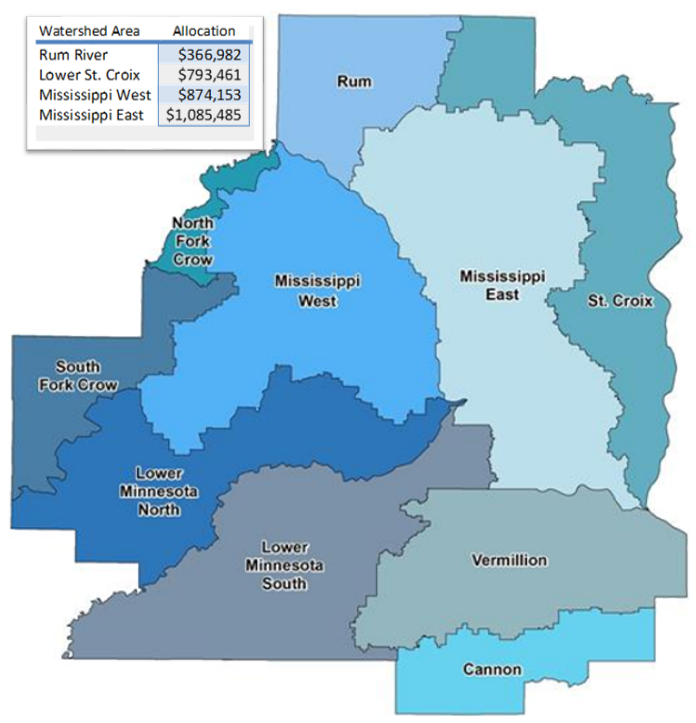Watershed Based Implementation Funding
A state strategy to move away from competitive grant funding and toward predictable and reliable allocations for water resource management is underway. The concern with competitive funding is the amount of staff time that is dedicated toward the preparation of project applications. With funding requests consistently exceeding available funding by a factor of four, the likelihood of success is slim. This creates a system of feast or famine project implementation, which leads to the highly inefficient cycle of building and dismantling programs and services.
The new approach, called Watershed Based Implementation Funding will eventually allocate up to 80% of available Clean Water Fund dollars to established partnerships that have ready-to-implement strategic plans. After the bugs are worked out, the hope is that water resource managers will be able to predict funding availability more accurately and be able to implement water quality improvement projects efficiently and systematically.
Anoka Conservation District is a member of four of these watershed-based partnerships: Rum River, Lower St. Croix, Mississippi West, and Mississippi East. Each group is in the process of meeting virtually to discuss how to distribute funds allocated to their watershed area. Allocations for watershed areas are based on land area and other factors, and vary greatly.
Funds can be distributed to partners to pursue the projects identified in their individual plans, or to a ranked list of projects compiled and approved by the partnership. Each group is likely to take a different approach. In the Rum River, a project list was developed by consensus of the partners, and was heavily influenced by project readiness. In the Lower St. Croix, there is a single master plan, called a 1-Watershed, 1-Plan that is being used to guide project selection. In Mississippi West, a ranking system has been developed and each partner may bring forward up to two projects for consideration. In Mississippi East, the preference seems to be to allocate funds to the three subgroups (soils and water conservation districts, watershed management organizations, and counties with groundwater plans) and have them work amongst themselves to develop a list of implementation activities.
How ever we get there, it will be exciting to see what projects and programs come to fruition through this new approach.
When you subscribe to the blog, we will send you an e-mail when there are new updates on the site so you wouldn't miss them.
